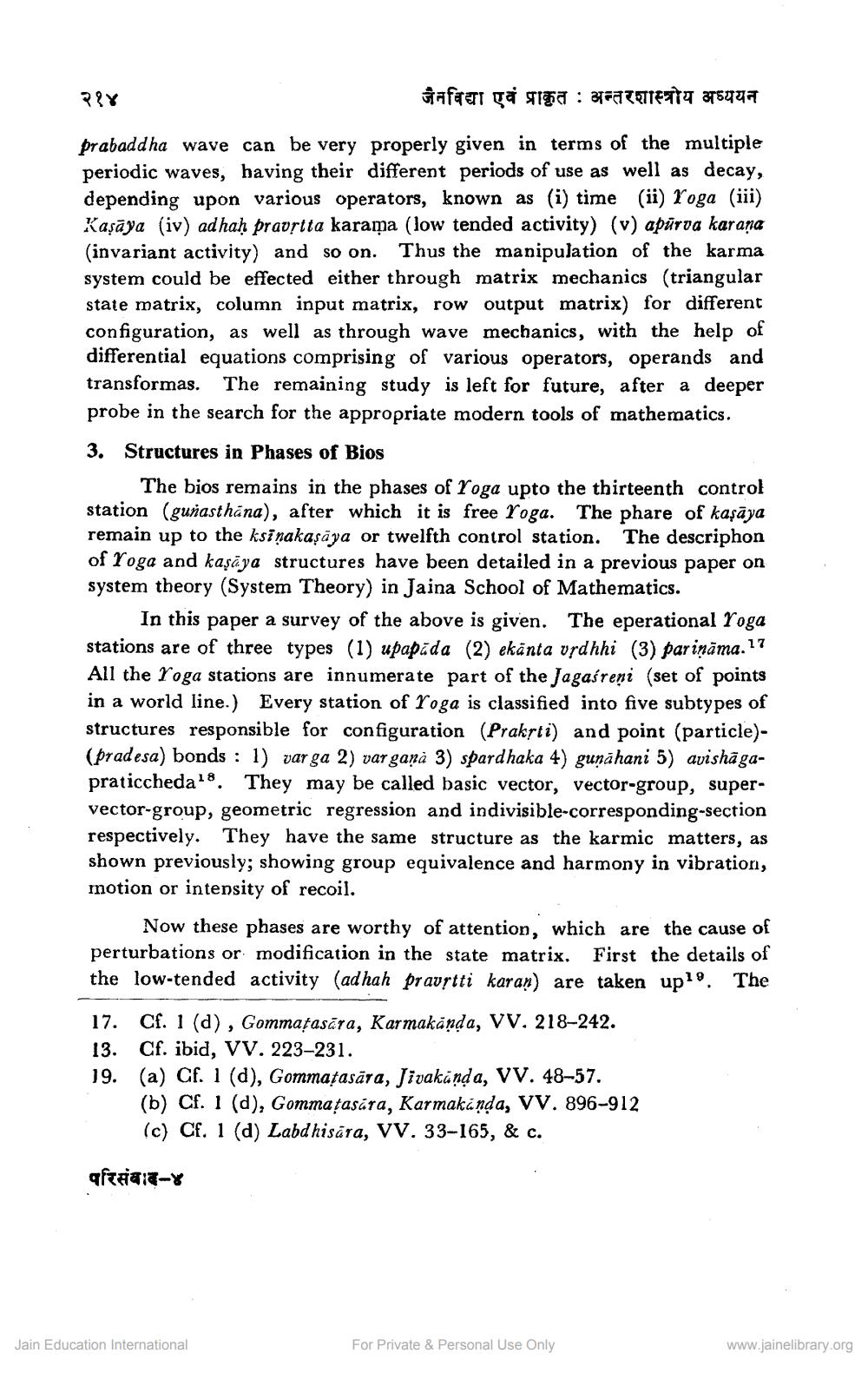Book Title: On Contribution Of Jainology To Indian Karm Structures Author(s): L C Jain, C K Jain Publisher: Z_Jain_Vidya_evam_Prakrit_014026_HR.pdf View full book textPage 9
________________ जैनविद्या एवं प्राकृत : अन्तरशास्त्रीय अध्ययन prabaddha wave can be very properly given in terms of the multiple periodic waves, having their different periods of use as well as decay, depending upon various operators, known as (i) time (ii) Yoga (iii) Kaşaya (iv) adhaḥ pravṛtta karama (low tended activity) (v) apūrva karaṇa (invariant activity) and so on. Thus the manipulation of the karma system could be effected either through matrix mechanics (triangular state matrix, column input matrix, row output matrix) for different configuration, as well as through wave mechanics, with the help of differential equations comprising of various operators, operands and transformas. The remaining study is left for future, after a deeper probe in the search for the appropriate modern tools of mathematics. 3. Structures in Phases of Bios २१४ The bios remains in the phases of Yoga upto the thirteenth control station (gunasthana), after which it is free Yoga. The phare of kaşaya remain up to the ksiṇakaṣāya or twelfth control station. The descriphon of Yoga and kaşaya structures have been detailed in a previous paper on system theory (System Theory) in Jaina School of Mathematics. In this paper a survey of the above is given. The eperational Yoga stations are of three types (1) upapāda (2) ekānta vrdhhi (3) pariņāma.17 All the Yoga stations are innumerate part of the Jagasreni (set of points in a world line.) Every station of Yoga is classified into five subtypes of structures responsible for configuration (Prakrti) and point (particle)(pradesa) bonds: 1) varga 2) var gana 3) spardhaka 4) gunahani 5) avishāgapraticcheda1. They may be called basic vector, vector-group, supervector-group, geometric regression and indivisible-corresponding-section respectively. They have the same structure as the karmic matters, as shown previously; showing group equivalence and harmony in vibration, motion or intensity of recoil. Now these phases are worthy of attention, which are the cause of perturbations or modification in the state matrix. First the details of the low-tended activity (adhah pravṛtti karan) are taken up19. The 17. Cf. 1 (d), Gommaṭasara, Karmakanda, VV. 218-242. 13. Cf. ibid, VV. 223–231. 19. (a) Cf. 1 (d), Gommaṭasāra, Jivakāṇḍa, VV. 48-57. (b) Cf. 1 (d), Gommaṭasāra, Karmakāṇḍa, VV. 896-912 (c) Cf. 1 (d) Labdhisāra, VV. 33-165, & c. परिसंवाद-४ Jain Education International For Private & Personal Use Only www.jainelibrary.orgPage Navigation
1 ... 7 8 9 10 11 12 13 14 15
